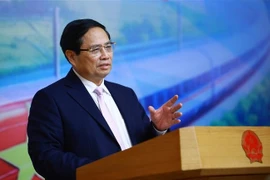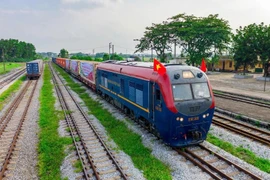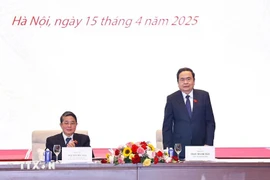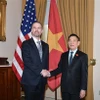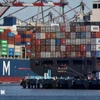Hanoi (VNA) – Efforts are being ramped up to fast-track three railway projects linking Vietnam and China, with the aim of making them symbolic project in bilateral cooperation, according to the Ministry of Construction.
Joint commitment to speed up implementation
Among the three planned routes, the Lao Cai–Hanoi–Hai Phong–Quang Ninh railway project is set to be the first to break ground. Following the National Assembly’s adoption of Resolution No. 187 on the investment policy, Minister of Construction Tran Hong Minh met with Chininese Minister of Transport Liu Wei in late March to discuss implementation plans. Both sides agreed to expedite preparations to commence construction by the end of 2025.
The Ministry of Construction has asked the Chinese side to swiftly approve and issue a diplomatic note on non-refundable aid for the project's feasibility study. It also proposed China designate a focal agency to negotiate a framework agreement for a government loan, and recommend capable enterprises to form joint ventures to participate in the project.
Domestically, the ministry is finalising a draft government resolution on the implementation of the National Assembly’s investment policy and coordinating with relevant ministries to prepare guiding decrees on special mechanisms and policies for the project.
Work is also underway to develop common criteria, regulations, technological standards, and designs to facilitate the mobilisation of capital and selection of contractors. Additional stations and branch lines are being considered to maximise economic development benefits for localities along the route.
For the Hanoi–Lang Son line, the ministry plans to construct a new double-track railway to meet projected demand by 2050, including 9 million tonnes of freight and 7.5 million passengers per year.
As for the Hai Phong–Ha Long–Mong Cai route, the ministry has determined the project’s scale and route direction to enhance connectivity among northern coastal provinces and support international rail transit. Vietnam is calling on China to accelerate the approval process for a technical assistance project supporting the planning of these two railways.
Opportunities for growth and regional integration
Deputy Minister of Construction Nguyen Danh Huy noted that the three cross-border railway projects are expected to enhance bilateral trade, connect Vietnam to China’s extensive rail network reaching Central Asia and Europe, and link China to ASEAN via Vietnam.
According to Tran Thien Canh, Director of the Vietnam Railway Authority, the investment in these railways will help restructure the transport sector and improve traffic safety.
To prepare for the Lao Cai–Hanoi–Hai Phong–Quang Ninh project, the ministry has asked the People’s Committees of nine affected provinces and cities to carry out land clearance, compensation, and resettlement, with the construction of resettlement areas expected to begin in 2025. Meanwhile, domestic enterprises are strengthening their capacity to serve both this project and the North–South high-speed railway.
For the Hanoi–Lang Son and Hai Phong–Ha Long–Mong Cai routes, detailed planning will soon commence to determine the routes' directions, technical standards, and investment plans. Construction is anticipated to begin after 2030, following approval of the planning phase./.
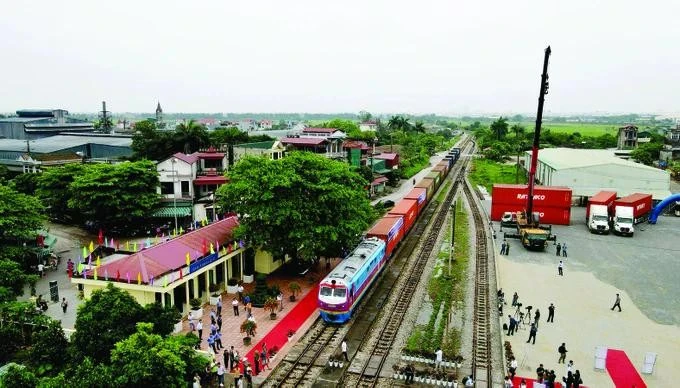
See more

Hyundai sales in Vietnam rebound strongly after early-year slump
According to figures released by the TC Group on April 15, Hyundai sold a total of 5,368 vehicles last month, a significant 77.6% increase compared to February.

Housing supply in Ho Chi Minh City remains limited
The residential property supply in Ho Chi Minh City remained constrained in the early months of 2025, with only 350 condominium units and 58 ready-built townhouses and villas launched.

Nghe An strengthens crackdown on illegal fishing activities
The inspection campaign, which runs from March to November, is divided into multiple peak phases aimed at detecting, preventing, and strictly handling violations of fishing regulations. It also seeks to raise fishermen’s awareness and compliance with the law.
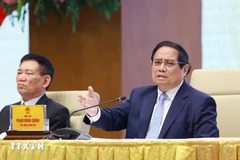
SOEs’ growth crucial for nation’s sustainable development: PM
The PM highlighted the important role played by SOEs in the national economy, noting that although the number of groups and corporations represents only a small percentage of the nearly 1 million businesses operating in Vietnam, they hold a key position as a significant material force of the economy, and production and business activities in main economic and technical sectors.
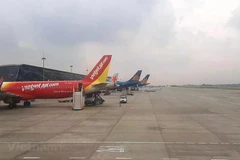
More types of aircraft permitted for import into Vietnam
Under the decree, aircraft types will be eligible for import into Vietnam if they are certificated by one of the following organisations - the US Federal Aviation Administration (FAA), the European Union Aviation Safety Agency (EASA), the Civil Aviation Agency of Brazil, the Transport Canada Civil Aviation (TCCA), the Federal Agency for Air Transport of the Russian Federation (Rosaviatsiya), the UK Civil Aviation Authority (UK CAA), the Civil Aviation Administration of China (CAAC), and the Ministry of Construction of Vietnam.
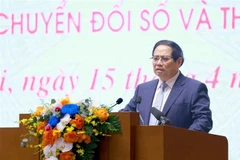
Prime Minister requires decisive actions for SOEs’ sustainable development
Vietnam should not rely on a single market or a single growth driver like export, Prime Minister Pham Minh Chinh said, stressing the need to diversify products, and production and supply chains to sustain growth.
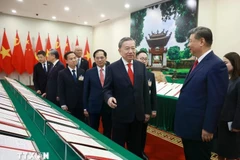
Vietnam, China ink pivotal agreements on railway, road cooperation
The railway sector was a focal point of the signing ceremony, with four key documents aimed at accelerating the preparation and implementation of transnational railway projects.

Chinese investors flock to Vietnam, fueling economic growth
According to a September 2024 report from HSBC, Vietnam ranked second among Southeast Asian markets targeted by Chinese investors, only behind Singapore.

Reference exchange rate up 5 VND on April 15
The State Bank of Vietnam set the daily reference exchange rate for the US dollar at 24,891 VND/USD on April 15, up 5 VND from the previous day.

Workers’ average income increase across most regions
By the end of Q1, the employed workforce nationwide reached 51.9 million people, a decrease of 0.4% against the previous quarter but a rise of 1.04% year-on-year. Of this total, 20 million got employment in urban areas while the figure in rural areas was 31.8 million.
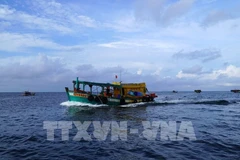
Kien Giang intensifies fight against IUU fishing to have EC’s “yellow card” removed
Director of the provincial Department of Agriculture and Environment Le Huu Toan said that competent agencies have been directed to identify fishing vessels operating without registration, technical safety certificates, fishing permits, and vessel monitoring system (VMS). Boats without proper documents are not allowed to set sail.
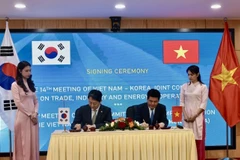
Vietnam, RoK step up trade ties to aid businesses
Key areas of cooperation include logistics, distribution, textile investment, and multilateral trade frameworks such as ASEAN–RoK, RCEP, APEC and IPEF.
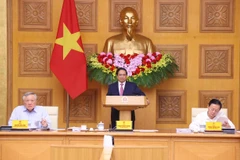
Private economic sector requires open institutions: PM
Prime Minister Pham Minh Chinh noted that the draft project has yet to identify bottlenecks and constraints hindering the private economic sector's growth and stressed the need to include concrete tasks and solutions to boost the sector.
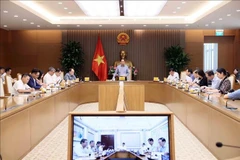
National committee meets to accelerate ODA, concessional loan disbursement
Between 2021 and 2024, the annual average disbursement rate was just 52%. In the first four months of 2025, the rate was only 4.6%, significantly lower than the national average disbursement rate for public investment of approximately 8% during the first quarter.
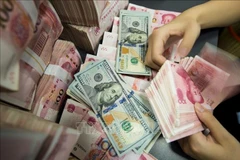
Reference exchange rate down 37 VND at week’s beginning
The State Bank of Vietnam set the daily reference exchange rate for the US dollar at 24,886 VND/USD on April 14, down 37 VND from the last work day of the previous week.
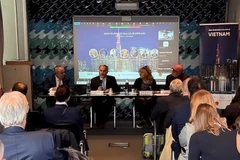
Italy's Liguria region eyes stronger economic cooperation with Vietnam
An Asia-Vietnam business dialogue in Italian city of Genoa featured expert insights into regional trade dynamics, real-world business case studies, and analysis of Vietnam’s fast-evolving key sectors — from manufacturing to technological innovation — amid shifting global trends.
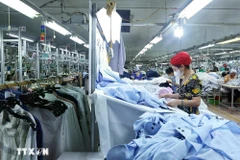
Gov’t negotiating team for trade talks with US set up
The Government negotiating team on trade issues with the US is headed by Minister of Industry and Trade Nguyen Hong Dien.
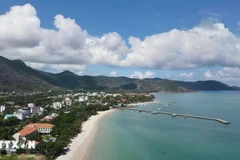
50 years of national reunification: Xuyen Moc thrives as tourism hub in southeastern region
In November last year, Loc An wharf was recognised as a special national historical site, highlighting its importance during Vietnam's resistance war against American forces.

Vietnam developing wind turbine blades that align with weather conditions
Vietnam is focusing on the development and application of green energy technologies, including the technology surrounding wind turbine blades and solar panel production, as it wants to fully tap its advantages in geography and climate to develop renewable energy.
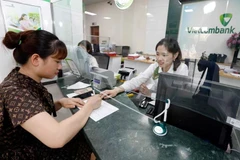
Seminar discusses how to successfully restructure banking sector
Experts explored the root causes behind both the successes and failures of Vietnam’s bank restructuring efforts, while proposing practical measures to enhance their effectiveness going forward at a seminar in Ho Chi Minh City on April 11.

